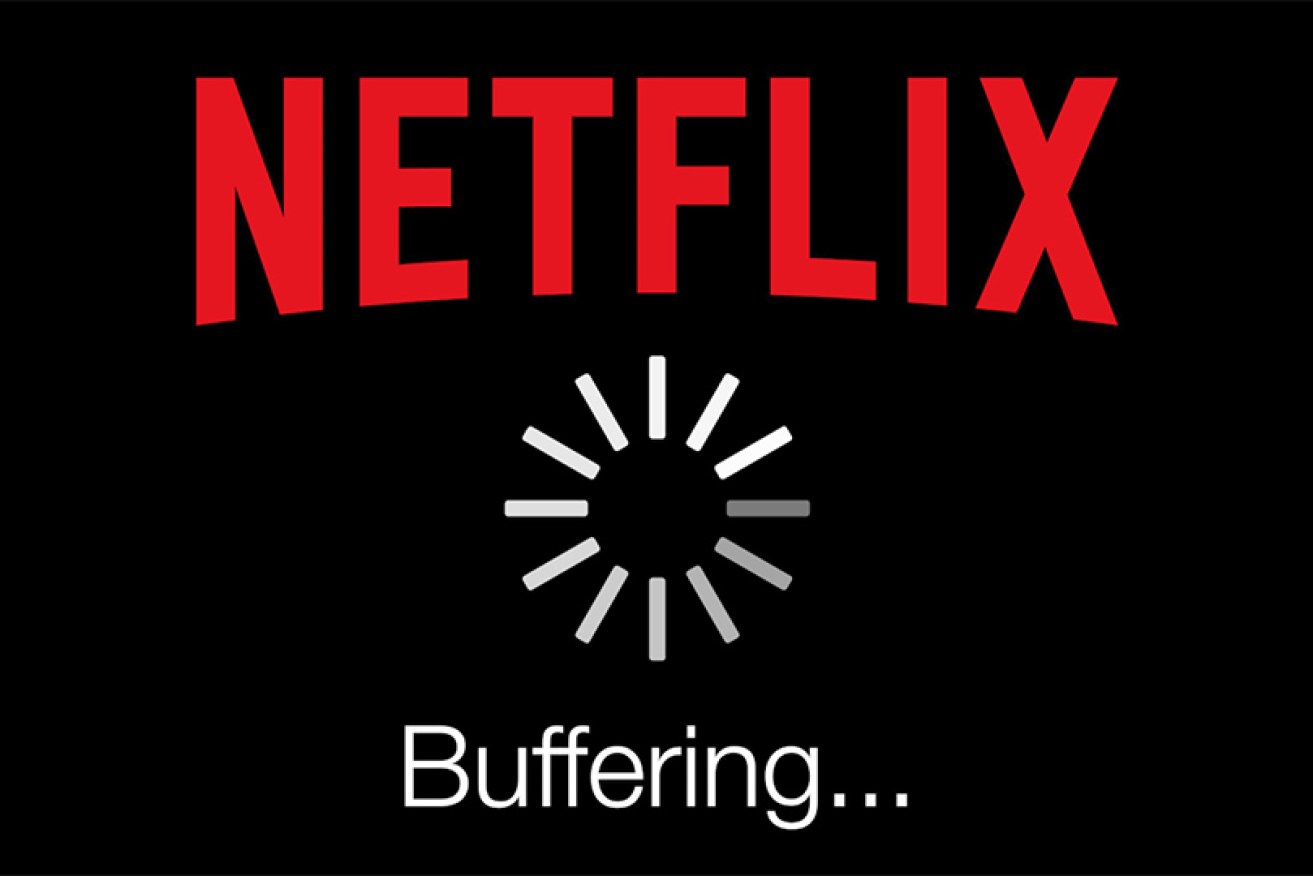How the country’s over-burdened internet infrastructure is hurting video streaming


Australian Netflix customers face buffering and connection dropouts, and the problem is set to worsen.
Australian Netflix users are suffering from buffering, with little hope of a solution in sight as our nation’s beleaguered internet infrastructure continues to choke under the weight of growing demand for online streaming services.
Experts have indicated that with no signs of our internet usage slowing and no signs of infrastructure improving, it’s just going to get worse.
A survey found 36 per cent of respondents have reported experiencing some connection or streaming issues, but 12 per cent have experienced serious issues with watching content uninterrupted.
Comparison site Finder found 4 per cent experienced unreliable connections, while 3 per cent of respondents said they constantly have problems streaming and another 5 per cent reported issues in the evening.
RMIT University associate professor of engineering Mark Gregory said these figures were only going to get worse as internet use in Australia continued to soar, and the technical failings of the NBN come to light.
“NBN Co is still running first-generation fibre to the home technology whereas many countries have moved to third-generation technology,” Associate Professor Gregory said.
“They’ve used technologies that struggle to support what we’re using the NBN for.”
Angus Kidman, tech expert at finder, said the sheer number of people over the summer period was only adding to the woes of Aussies hoping to sit back, drop out, and binge.
“The impact of many people streaming at once causes significant strain on the broadband network,” Mr Kidman said.
“This slows down your internet connection, leading to buffering or dropouts.”
Data usage growing
Australian Bureau of Statistics figures showed the volume of data Australians downloaded between April and June 2018 was 28.1 per cent higher than the volume downloaded during that same period in 2017 – a new total of 3.8 million terabytes.
That’s 1.5 terabytes – or 1500 gigabytes – downloaded in three months for every Australian.

ABS data shows volume of downloads has grown faster than subscribers.
Since 2013, data downloaded in Australia has grown 483 per cent.
The NBN started a trial rollout in 2010 moving on to fibre to the node in 2013, however in 2016 it switched from a fibre to the node and kerb technology mix to a mix of old and new technology that incorporated the existing copper network.
The introduction of the NBN did little to shift the number of internet users in Australia, but greatly improved scope for downloads.
It also created periods of peak use in the evenings and after work that caused many users to experience slowdowns and buffering.
This points to more issues in the future, as data download rates seem destined only to head north.
Online streaming is growing, and now represents almost half of all media viewing, according to a survey commissioned by comparison site WhistleOut.
The report found 57 per cent of respondents watched Netflix at least once a week, followed by YouTube at 40 per cent. However, a closer interpretation of the data reveals Australians watch Netflix more than any other service in Australia, proving that binge watching is big.
WhistleOut editor Joseph Hanlon said although the volume of data downloaded was significantly more than previous years, the issues people were experiencing with the NBN were more associated with retailers allocating too little bandwidth per user.
“It seems like a lot of the capacity issues have gone away,” Hanlon said.
“It just doesn’t seem like Netflix is bringing down the internet.”

WhistleOut’s comparison of streaming services available in Australia.
However, he said with the mixed technology used in the NBN, there would be losers as well as winners in internet speeds, something that may become more pronounced as internet use increases.
“That’s not to say that the next thing, whatever that is, won’t present new problems,” he said.
Associate Professor Gregory said due to the mixed technology used in the construction of the NBN, upgrading the system would present difficulties.
“The NBN is not easy to retrofit. There is going to have to be significant expenditure and cost,” he said.
“The experts were telling the Coalition in 2013 that their decision to go back to the obsolete technologies means there is no easy upgrade path.”
Worrying changes to data tracking
The issue may be all the more keenly felt as ABS tracking of data download in Australia has ceased, meaning there’s little way to tell which areas need improving, and how.
The Australian Competition and Consumer Commission is intending to undertake collection and analysis of internet activity but is yet to report, something Associate Professor Gregory said was concerning.
“We had a fantastic source of data being collected by the ABS and it was something we could use for research. But now it’s stopped and at some point in the future the ACCC is going to do something, but we don’t know what,” he said.
The telecommunication industry ombudsman reported 13,008 complaints about the NBN between January and June last year – or 3.2 complaints per 1000 connected premises.
That’s down from the high of nine complaints per 1000 connected premises in the same period in 2017.
The ACCC on Wednesday encouraged NBN consumers with slow connection speeds to contact their provider as they may be eligible for a refund. The providers in question are Telstra, Optus, TPG, iiNet, Internode, Dodo, iPrimus and Commander.
Finder research showed 80 per cent of Aussie households didn’t sway from the provider they originally used to connect to the NBN.








